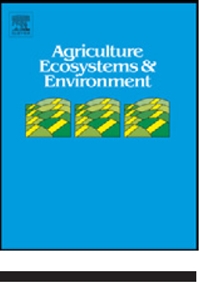
abstract
An important ecological service provided by tropical riparian ecosystems is the mitigation of nutrient pollution (e.g. nitrate) from surrounding agricultural areas. However, a negative impact of this nutrient remediation may be that the ecozone also functions as a major emitter of nitrous oxide (N2O). We hypothesized that the high inorganic nitrogen, organic carbon, and soil water content in tropical riparian ecosystems enhances N2O production through rapid nitrification and denitrification processes. This study was therefore designed to quantify the variability in N2O emissions in such an ecosystem in northern Thailand with specific emphasis on (1) different land uses (comparing replicate leguminous reforestation areas with conventional maize agriculture with high rates of nitrogen fertilizer addition), and (2) temporal aspects (comparing wet and dry seasons). Our aim was to quantify N2O emissions and to identify the major drivers controlling these emissions. Using in situ closed chambers the annual average emissions of N2O from the leguminous reforestation area (3.3 kg N2O N ha−1 y−1) was significantly higher than agricultural areas with maize (2.2 kg N2O N ha−1 y−1). The seasonal variation results indicated that the rate of N2O flux in the wet season was higher than in the dry season. The variations of N2O emission rates were strongly correlated with water filled pore space (WFPS), denitrification, and microbial biomass C, but not with nitrification. This study indicates that when inorganic N and soil organic C are sufficient, WFPS plays an important role in controlling N2O emissions from denitrification. Comparatively, annual N2O emissions from the tropical riparian reforestation were similar to that reported for temperate riparian forests and other ecosystems. Although the annual N2O emissions from the maize agricultural area were comparable to other crops cultivated in riparian ecosystems, it was higher than the N2O fluxes from crops grown in non-riparian zones. We conclude that agricultural lands located in tropical riparian zones do not represent a major hotspot of N2O emissions and that this does not diminish the positive benefits they provide in relation to other aspects of ecosystem service provision.
Contents lists available at SciVerse ScienceDirect
Agriculture, Ecosystems and Environment
jo ur n al homepage: www.elsevier.com/lo cate/agee


































